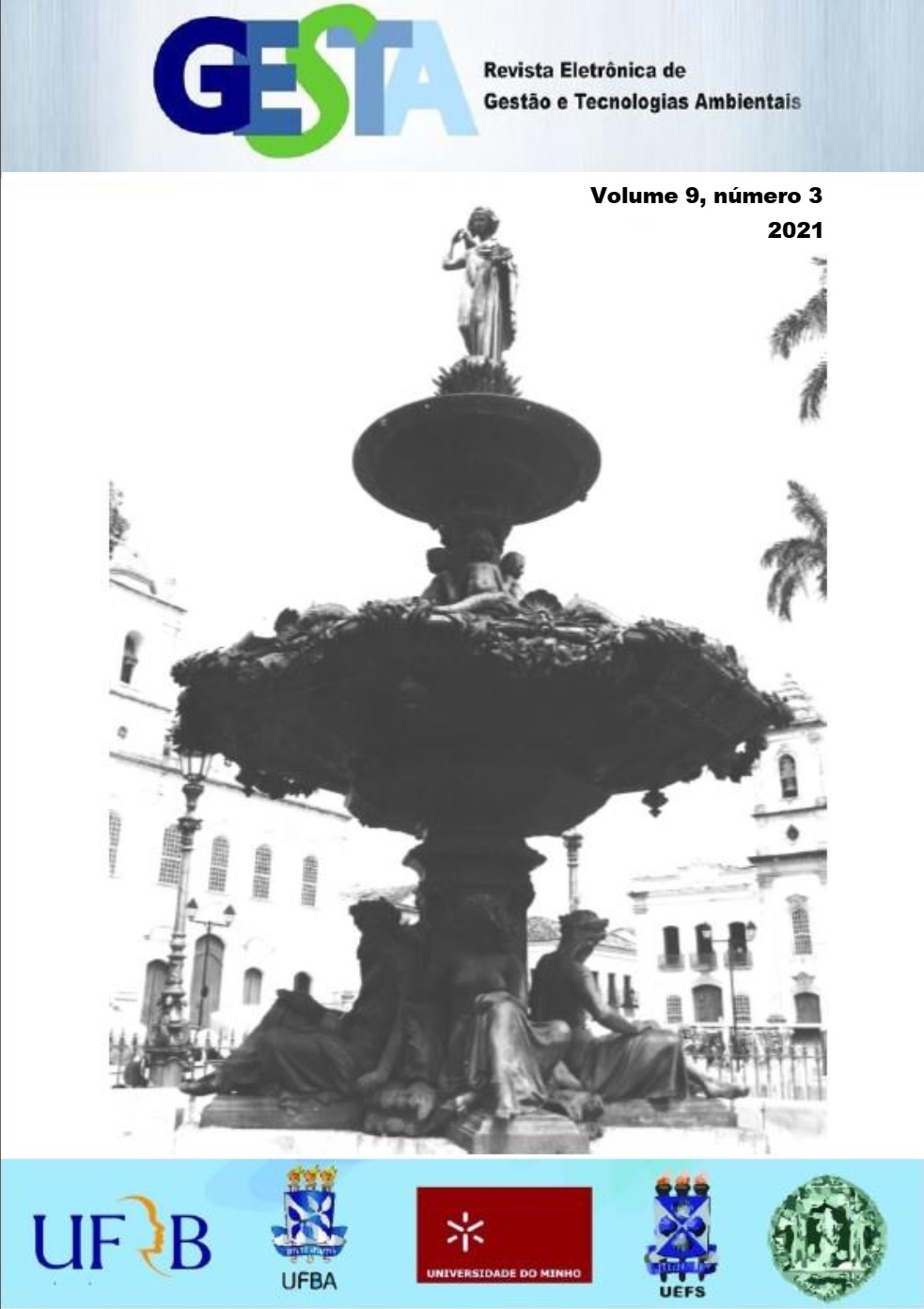BIOMETHANE PRODUCTION BY LICENSED BRAZILIANS LANDFILLS AND POTENTIAL ENERGY USE IN SMALL MUNICIPALITIES
DOI:
https://doi.org/10.9771/gesta.v9i3.47256Palavras-chave:
Municipal solid waste, landfill, biogas, biomethane, renewable energy.Resumo
One of the main challenges especially for small developing cities is finding economically viable alternatives to the management of municipal solid waste. This research aims to investigate the potential of biomethane production by licensed Brazilian landfills, in order to assess the feasibility of using biomethane energy in small municipalities. This study identified three biogas-upgrading facilities authorized by the Brazilian National Agency of Petroleum, Natural Gas and Biofuels (ANP) as to know: GNR Dois Arcos, Gás Verde and GNR Fortaleza. Field research collected additional information about the landfills and biomethane facilities investigated, in order to create indexes for supporting decision-makers in the waste management sector. Indexes A and B were proposed, which represent: the relation between the biogas production and the mass of landfilled municipal solid waste, and the relation between the biomethane processing capacity in the facility and the biogas production potential, respectively. This study showed that one of the facilities with lower biomethane production and biogas processing capacities, and which receives municipal solid waste from several small municipalities - such as GNR Dois Arcos - presented a similar value for index A in relation to the biggest facility – such as Gás Verde - and the highest value for index B compared to the other two larger facilities.
Downloads
Downloads
Publicado
Como Citar
Edição
Seção
Licença
Copyright (c) 2021 Revista Eletrônica de Gestão e Tecnologias Ambientais

Este trabalho está licenciado sob uma licença Creative Commons Attribution-NonCommercial-ShareAlike 4.0 International License.
Autores que publicam nesta revista concordam com os seguintes termos:- Autores mantém os direitos autorais e concedem à revista o direito de primeira publicação, com o trabalho simultaneamente licenciado sob a Creative Commons Attribution License que permitindo o compartilhamento do trabalho com reconhecimento da autoria do trabalho e publicação inicial nesta revista.
- Autores têm autorização para assumir contratos adicionais separadamente, para distribuição não-exclusiva da versão do trabalho publicada nesta revista (ex.: publicar em repositório institucional ou como capítulo de livro), com reconhecimento de autoria e publicação inicial nesta revista.
- Autores têm permissão e são estimulados a publicar e distribuir seu trabalho online (ex.: em repositórios institucionais ou na sua página pessoal) a qualquer ponto antes ou durante o processo editorial, já que isso pode gerar alterações produtivas, bem como aumentar o impacto e a citação do trabalho publicado (Veja O Efeito do Acesso Livre).





